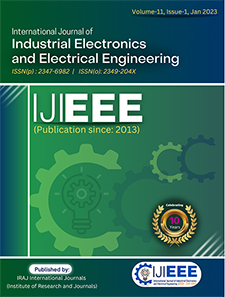Publish In |
International Journal of Industrial Electronics and Electrical Engineering (IJIEEE)-IJIEEE |
 Journal Home Volume Issue |
||||||||
Issue |
Volume-6,Issue-5 ( May, 2018 ) | |||||||||
Paper Title |
Comparative Analysis on Output Results and %Thd of Three-Phase Conventional Inverter & 3-Level and 5-Level of Diode Clamped Multilevel Inverter | |||||||||
Author Name |
Yu Yu Khin, Wunna Swe | |||||||||
Affilition |
Department of Electrical Power Engineering, Mandalay Technological University, Myanmar Mandalay, The Republication of the Union of Myanmar | |||||||||
Pages |
19-26 | |||||||||
Abstract |
Multilevel inverter has become attractive in the power industries and it can be applied in many applications especially in renewable energy systems and improvement of the power quality. On the other hand, the technique used to generate the required switching pulses plays an important role to improve the inverter characteristics. Some advantages that multilevel inverters have compared to conventional inverters are minimum harmonic distortion, reduced EMI generation and operation on several voltage levels. In this paper 3-level and 5-level diode clamped multilevel inverters (DCMLI) with RL load are analysed, simulated and compared with conventional, two level inverter. All inverter topologies are modulated by Phase Disposition (PD-PWM) method which is one type of the Sinusoidal Pulse Width Modulation (SPWM) technique family. The Total Harmonic Distortion (THD), Phase Voltage (Vrms), Line Voltage (Vrms) and Current (Irms) are evaluated by using MATLAB-SIMULINK. It is observed that DCMLI generates near sinusoidal output voltage and current, as a result has very low harmonic contents. The term of output line voltage THD contents in 2-level inverter is nearly contained twice more than 3-level inverter and four times more than 5-level inverter. The results show that the performance is greatly improved by the increased number of levels. Keywords - Conventional Inverter, Diode Clamped Multilevel Inverter, MATLAB-SIMULINK,PD-PWM, Total Harmonic Distortion | |||||||||
| View Paper | ||||||||||